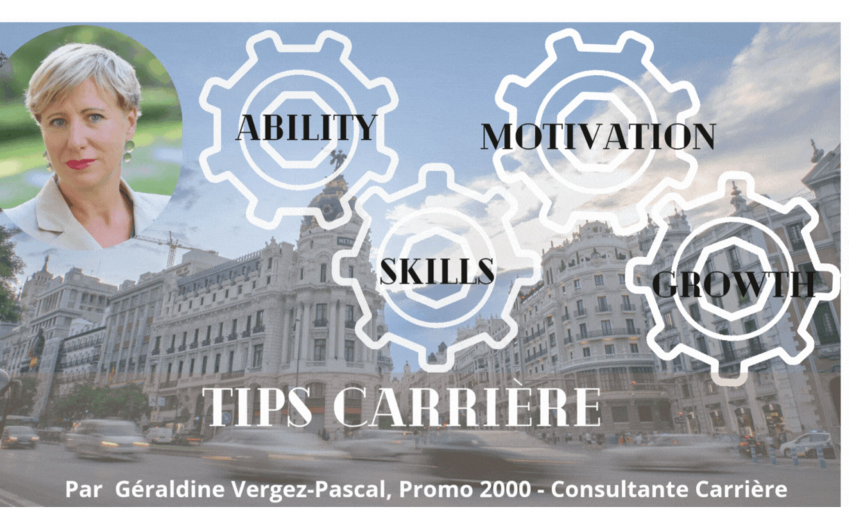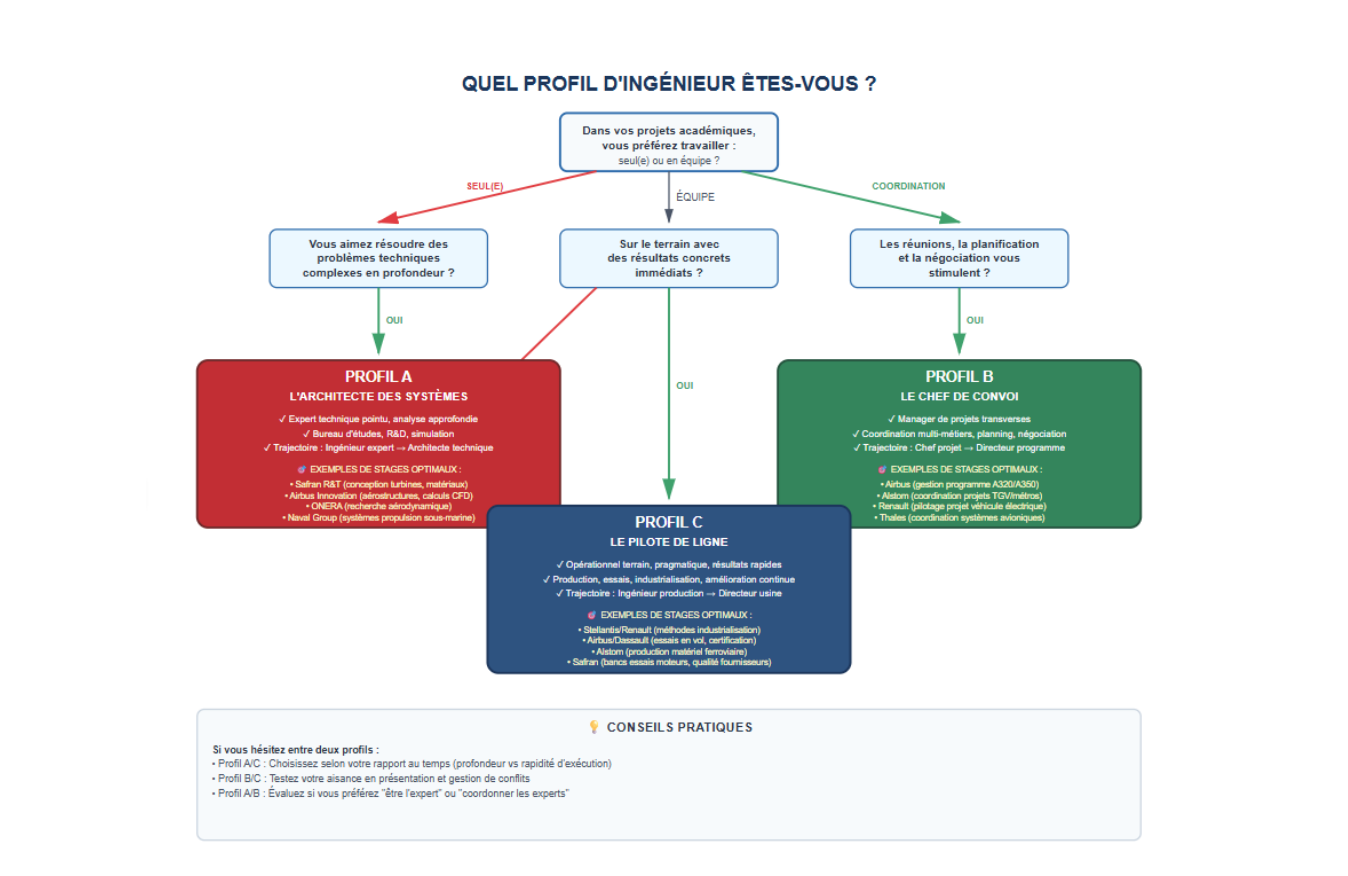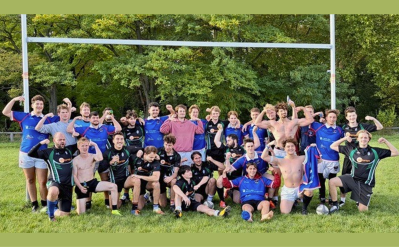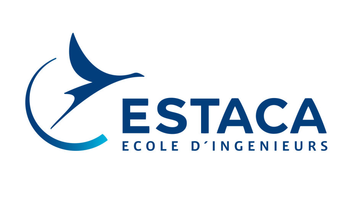News

Tips Careers
Géraldine Vergez-Pascal, 2000 graduate, HR specialist, partner of the Alumni network and member of the BDAE, offers a series of articles aimed at future graduates to help them in their careers.
Graduation internship: the investment that shapes a 10-year career
The first gear in your career system
Six months of internship, ten years of impact. This equation may seem exaggerated, but the data are formal: in the transport sector, your end-of-study internship influences your career trajectory well beyond your first job.
The figures from the IESF 2024 survey (42,000 engineers questioned) speak for themselves:
- 57% of engineers who have completed an apprenticeship are hired by their host company
- 66.8% find their first job even before leaving school, for ESTACA engineers 77% (source: Enquête CGE 2025)
- 46.1% of first jobs are with their host company (CDI and CDD combined/ internship, apprenticeship and gap year internship combined)
The three hidden mechanisms of long-term influence
1. The effect of technical specialization
Your internship creates your first professional "technical signature". In aeronautics, having worked on composite materials at Airbus opens the doors to advanced design offices. In the automotive industry, experience in electric propulsion systems is a prerequisite for the entire electromobility sector.
A concrete mechanism confirmed by the data: according to the IESF 2024 survey, among engineers who change employer, 51% remain in the same business sector. This sector fidelity demonstrates the anchoring effect created during the initial training period.
The transport sectors are recruiting massively :
- 85% of engineering firms report recruitment difficulties (strong demand for qualified profiles)
- 17 to 20% of new hires in 2023 in the following sectors: Industry, Engineering firms, Energy, Construction/Public works
My practical advice: Choose your internship based on the technology you want to master at 35, not just the one that interests you at 23.
2. Profile-project alignment: assembling the right components from the start
Your training course is not there to reveal who you are, but to put you on the RIGHT TRACKS.
Too many students still choose their internship as a lottery: prestige of the company, geographical location, remuneration. As a result, some discover during the internship that they've taken the wrong train. That's 6 months lost in the acceleration of your career.
The right approach: tune the engine BEFORE takeoff
Your internship is the first gear in a transmission system called "your career". A bad initial gear creates friction and energy losses for years to come. Before you even apply for a job, you need to know what kind of machine you want to be driving when you're 35.
Your 4-dimensional self-diagnosis is essential (your relationship with technology, your relationship with people, your vision of success, your dominant natural aptitudes). It must be completed 12 months before the course.
My practical advice: Before you start, answer the question "What kind of engineer am I?", as each profile corresponds to an optimal type of internship.

3. Reasons for professional mobility (IESF 2024) :
When engineers change jobs, the main reasons are :
- 55%: Better opportunities elsewhere (pay, conditions, job content)
- 28%: Dissatisfaction with the company
The network built up during internships and in each job plays a crucial role in identifying these "best opportunities".
My practical advice:
- Maintain annual contact (year-end greetings, professional news) with your professional contacts. Use LinkedIn actively to follow their progress.
- Map your industry ecosystem: Who are your internship company's competitors? Key suppliers? Strategic customers? This mind map will be invaluable for your future job search.
- The ESTACA network is a very important lever, and our training is recognized in our sectors. Keep in touch with your fellow graduates, take part in ESTACA's sponsorship program and keep the alumni network alive.
Conclusion: The internship is not an experiment, it's the first segment in your kinematic chain.
The data are clear:
- 51% of those who change employer stay in their initial sector
- The strongest salary progression (+45%) occurs between the ages of 30 and 39, the period when your career path initiated during an internship takes shape.
You wouldn't assemble a jet engine by randomly testing different types of compressor. Your career deserves the same rigorous engineering approach. Identify the system you want to pilot, choose the internship that puts you on the right track, and you'll be 5 years ahead of those who discover their career path by trial and error.
The question is not "which stage then should I get?" but "which stage should be the first segment of MY transmission line?"
Sources :
- IESF (Ingénieurs et Scientifiques de France) - Enquête Nationale 2024, 42,000 respondents
- CGE (Conférence des Grandes Écoles) 2024 Insertion Survey, 100,000+ responses, 199 schools
- CGE (Conférence des Grandes Écoles) - Insertion 2024 survey, 100,000+ responses, 199 schools
- Survey ESTACA Promos 2022-2023-2024 ( 600+ responses)
Next step: Our next article will deal with "Negotiating your first job after your internship: the keys to making the most of your experience".
Géraldine Vergez-Pascal
Class of 2000
 1
1















No comment
Log in to post comment. Log in.